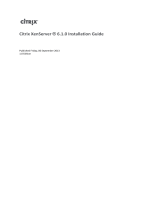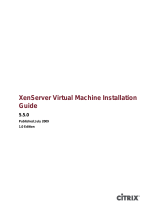
Dell Virtual Remote Desktop Solution Reference Architecture 5
Introduction
This document describes four validated configurations of Dell|XenDesktop
virtual infrastructure for XenDesktop deployments, so you can select the
most suitable Dell virtualization solution for your needs. You can customize
these configurations to fit your specific system needs.
Dell|XenDesktop provides flexible desktop virtualization that you can
optimize for workload or feature requirements through server, network,
storage, and software configurations. Dell has validated these configurations
using extensive testing. See "Appendix: Testing Methodology" on page 19 for
details on how the configurations were tested.
The configurations are:
•
Very Small:
A simple configuration for very small deployments and
satellite offices with up to 100 licenses.
•
Small:
This configuration requires minimal hardware, is designed with
simplicity in mind, and focuses on demonstrating functionality. Valid for
up to 250 licenses.
•
Medium:
This configuration is designed to meet the production
requirements of small and medium businesses, such as economical
iSCSI/SAN and backup options, with up to 500 licenses.
•
Large:
This configuration is a full-feature virtualization solution that uses
the advanced features of XenDesktop in an expansive environment with
up to 1000 licenses.
This document describes the features, benefits, and performance
implications of each configuration. The goals of the document are to:
• Introduce you to the architecture of the Dell|XenDesktop configurations.
• Help you understand the factors related to virtualization of particular
usage models.
• Help you select the best configuration for your system needs.
This document only covers Dell|XenDesktop Virtual Remote Desktop
(VRD) solutions, and defines the configurations using Dell servers, storage,
and networking components. Custom configurations for specific customer
engagements may have third-party hardware, and, therefore, are out of scope,
as are software components from Microsoft
®
or XenServer™ platforms.
Reference_Architecture.book Page 5 Thursday, November 6, 2008 2:12 PM





















